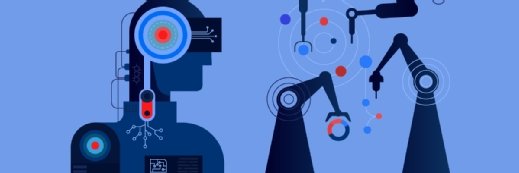
traffic_analyzer/DigitalVision V
Machine Learning-Aided Biomarker Analysis Predicts Parkinson’s Onset
New machine learning tool identifies metabolites that could provide early warning signs of Parkinson’s disease years before symptoms begin appearing.
Researchers from Boston University and Australia-based University of New South Wales (UNSW Sydney) developed a machine learning (ML) tool that predict Parkinson’s disease onset years before symptoms start to appear by analyzing patient biomarkers, according to a study published last week in ACS Central Science.
The tool, known as Classification and Ranking Analysis using Neural network generates Knowledge from Mass Spectrometry (CRANK-MS), leverages neural networks to analyze metabolomic data. Metabolites, the chemical compounds created by the body when it breaks down drugs, food, or chemicals, are found in human tissues and bodily fluids such as blood.
Metabolites can be used as biomarkers for certain disease and conditions, but no blood or laboratory tests currently exist to diagnose non-genetic Parkinson’s.
According to the study, metabolite analysis via mass spectrometry (MS) has revealed differences in metabolite profiles in patients who would later develop Parkinson’s up to 15 years before clinical diagnosis, suggesting that the disease could be diagnosed significantly earlier than in current clinical practice.
The researchers used these insights to build their prediction model, which analyzes whole metabolomics data, an atypical approach.
The researchers explained that the most common methods for metabolomics data analysis are statistical approaches that involve looking at correlations between molecules. ML allows the research team to look at hundreds to thousands of these associations between the metabolites themselves, a process that requires significant computational power.
CRANK-MS further enables researchers to analyze unedited data lists.
“Typically, researchers using machine learning to examine correlations between metabolites and disease reduce the number of chemical features first, before they feed it into the algorithm,” said W. Alexander Donald, PhD, an associate professor in the School of Chemistry at UNSW Sydney, in a press release detailing the study. “But here we feed all the information into CRANK-MS without any data reduction right at the start. And from that, we can get the model prediction and identify which metabolites are driving the prediction the most, all in one step. It means that if there are metabolites which may potentially have been missed using conventional approaches, we can now pick those up.”
By applying CRANK-MS to the metabolomics data of 39 patients who developed Parkinson’s up to 15 years later compared with a cohort of matched control patients, the researchers identified unique metabolite combinations that could be early signs of Parkinson’s. When these combinations were used as predictors, the ML tool could forecast disease onset with up to 96 percent accuracy.
"This study is interesting at multiple levels,” Donald said. “First, the accuracy is very high for predicting Parkinson's disease in advance of clinical diagnosis. Second, this machine learning approach enabled us to identify chemical markers that are the most important in accurately predicting who will develop Parkinson's disease in the future. Third, some of the chemical markers that drive accurate prediction the most have been previously implicated by others to Parkinson's disease in cell-based assays but not in humans."
The analysis identified that polyfluorinated alkyl substances (PFAS) were present in those who later developed Parkinson’s, and these same individuals also had lower concentrations of triterpenoids, a neuroprotectant that regulates oxidative stress.
Further research to validate CRANK-MS in larger, diverse patient cohorts are needed, in addition to more in-depth investigation of the relationships between Parkinson’s and chemicals like PFAs and triterpenoids, the researchers concluded.
Following model validation on larger patient cohorts, the research team noted that CRANK-MS could also be applied to other diseases to help flag new biomarkers.






